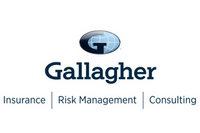Four rules for improving your communications about reward
To unleash the full potential of your reward programmes, there are three essential factors:
- State-of-the-art technology that empowers your benefits offering with revolutionary speed, connectivity and analytical capabilities, enabling it to be agile and remarkably impactful.
- Investment in enhancing employees’ financial literacy, ensuring that they can evaluate and derive genuine value from their rewards.
- Clear, two-way communication that, when executed skilfully, can convert all your behind-the-scenes dedication and investments into employee engagement.
Let’s talk about reward
In February, progressive reward experts from around the world convened in London for Neovation’s Reward Forward event. Discussions revolved around a shared concern: while the rapidly evolving workplace has made it increasingly crucial for organisations to get their rewards right, reward practices have become stagnant.
Escalating living costs are straining employee financial wellbeing, placing reward and benefits at the forefront of the competition for talent. Workforce demographics are shifting, with younger generations demanding more from their employee experience. They expect ‘genuine’ workplace connections within a digitally driven, flexible and personalised world.
Hence, the 4 rules of effective reward communication are:
1. Active listening
For reward to strike a chord, it must align with the desires, needs and values of your employees. Don’t presume to know which benefits will be most appealing to them. Instead, ask them, be responsive and maintain a dialogue. This way you will foster engagement and gain insight into how to adapt your rewards to meet present needs.
2. Transactional vs emotional
Listening to employees resolves another challenge that often hampers seamless reward communication. It’s understandable for HR to see reward as a transactional process and overlook its emotional effect on employees.
This impact isn’t solely due to the fact that reward determines lifestyles and choices; it’s also because reward represents how the organisation values an individual. It speaks of appreciation, status and opportunities.
Organisations that effectively convey that value establish emotional, human connections between individuals and the company. These connections are vital for fostering long-term loyalty and dedication.
This is why recognition plays a crucial role in reward. An organisation might not be able to provide industry-leading financial compensation, but by expressing value through recognition and expressing gratitude for individual contributions, it addresses the emotional aspect of reward.
3. Establishing connections
An effective approach to forging emotional connections is by communicating the multi-faceted nature of reward. This includes both traditional aspects like compensation, bonuses, equity and benefits, as well as other ways in which the organisation invests in the employee experience, such as diversity, equity, inclusion, career path opportunities and wellbeing.
These connections need to be explicitly voiced, so they are perceived as integral parts of reward offered by the organisation. Rather than restricting reward communication to the benefits selection period or bonus discussions, use the cultural aspects of reward to demonstrate the organisation’s year-round investment in its employees.
4. Use the right channels
At Reward Forward, Ashok Pillai, Senior Vice-President of Reward and Wellbeing for BP, called communication the bridge between the cost of reward programmes and the value they generate.
According to Pillai, the source of this communication is crucial. For reward messaging to have maximum impact, it must originate from leaders — both at the top in terms of overall messaging and at the individual level through line managers to employees. This means aligning reward communication to ensure consistency while supporting line managers.
Considering line managers as a vital avenue for reward communication yields an additional advantage. It guarantees the dissemination of information to every employee, including those engaged in frontline work or frequently travelling who may have limited communication access.
Leveraging line manager communication fosters fairness in accessing information, stimulates personalised discussions regarding reward and showcases your organisation’s investment in its employees.
If you’re looking to enhance the effectiveness of your reward communications, get in touch with Caburn Hope. Contact us here or email us at [email protected]
Supplied by REBA Associate Member, Gallagher
Gallagher is a global, integrated HR consulting, benefits administration & technology services provider.








